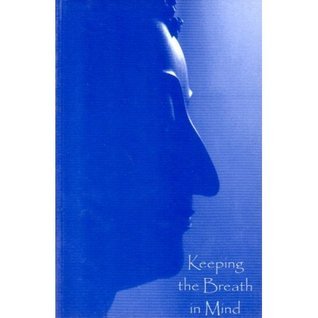What do you think?
Rate this book


60 pages, Paperback
First published January 1, 2000
You might compare this book to a recipe. If you simply read the recipe, you can’t—even if you understand all the terms—get any flavor or nourishment from it. If you follow the first few steps and then give up when it starts getting difficult, you’ve wasted your time. But if you follow it all the way, you can then set it aside and simply enjoy the results of your own cooking.
To practice centering the mind is to build a home for yourself: Momentary concentration (khanika samadhi) is like a house roofed with thatch; threshold concentration (upacara samadhi), a house roofed with tile; and fixed penetration (appana samadhi), a house built out of brick.
Some people believe that they don't have to practice centering the mind, that they can attain release through discernment (panna-vimutti) by working at discernment alone. This simply isn't true. Both release through discernment and release through stillness of mind (ceto-vimutti) are based on centering the mind.
If you don't want the nimitta to appear, breathe deep and long, down into the heart, and it will immediately go away.
Sit in a half-lotus position, right leg on top of the left leg, your hands placed palm-up on your lap, right hand on top of the left.
"Metta" (benevolence and goodwill, hoping for your own welfare and that of all other living beings.)
"Karuna" (compassion for yourself and others.)
"Mudita" (appreciation and empathetic joy, taking delight in your own goodness and that of others.)
"Upekkha" (equanimity in the face of those things which should be let be.)
To think of the breath is termed vitakka, directed thought. To adjust the breath and let it spread is called vicara, evaluation.
So observe things carefully. Again, it's like eating. If you go shoveling food into your mouth, you might end up choking to death. You have to ask yourself: Is it good for me? Can I handle it? Are my teeth strong enough? Some people have nothing but empty gums and yet they want to eat sugar cane: It's not normal. Some people, even though their teeth are aching and falling out, still want to eat crunchy foods. So it is with the mind: As soon as it's just a little bit still, we want to see this, know that - we want to take on more than we can handle. You first have to make sure that your concentration is solidly based, that your discernment and concentration are properly balanced. This point is very important. Your powers of evaluation have to be ripe, your directed thought firm.
Don't let the mind leave the object. Don't let the object leave the mind. Tell yourself that it's like eating: Put the food in line with your mouth, put your mouth in line with the food. Don't miss. If you miss, and go sticking the food in your ear, under your chin, in your eye, or on your forehead, you'll never get anywhere in your eating.
Nibbana doesn't lie far away. It's right at our lips, right at the tip of our nose, but we keep groping around and never find it. If you're really serious about finding purity, set your mind on meditation and nothing else. As for whatever else may come your way, you can say, 'No thanks.' Pleasure? 'No thanks.' Pain? 'No thanks.' Goodness? 'No thanks.' Evil? 'No thanks.' Attainment? 'No thanks.' Nibbana? 'No thanks.' If it's 'no thanks' to everything, what will you have left? You won't need to have anything left. That's nibbana. Like a person without any money: How will thieves be able to rob him? If you get money and try to hold onto it, you're going to get killed. If this thief doesn't get you, that one will. Carry 'what's yours' around till you're completely weighed down. You'll never get away.
If you focus your attention on the comfortable part, your mind can be at peace. Let the pains be in the other part. Once you have an object of meditation, you have a comfortable place for your mind to stay. You don't have to dwell on your pains.
Once we have the truth - the Dhamma - as our wealth, we won't suffer if we have money, and won't suffer if we don't, because our minds will be transcendent.
The four bases of success (iddhipada) - the desire to practice, persistence in the practice, intentness and circumspection in your practice - will develop step by step.